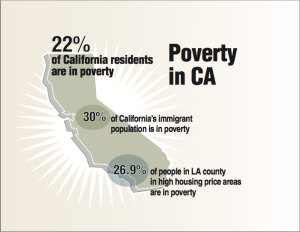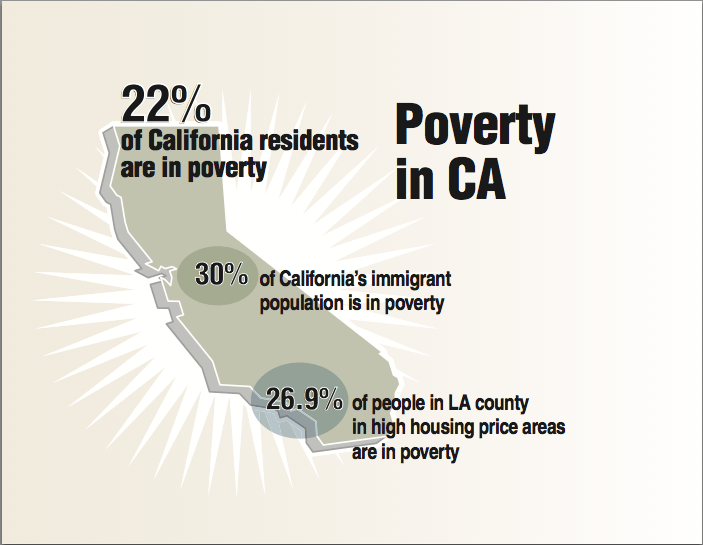A recent study conducted by Stanford scholars revealed that 22 percent of California residents are in poverty.

The Stanford Center on Poverty and Inequality and the Public Policy Institute of California (PPIC) conducted the study—prompted by the Supplemental Poverty Measure released by the Census Bureau—revealing that California’s poverty rate was the highest of any state.
While the Census Bureau study relied on self reports from those who use federal safety nets—such as CalFresh (California’s food stamp program), CalWORKs (California’s cash assistance program) and the federal Earned Income Tax Credit—the the Stanford-PPIC study used a new method of calculating poverty called the California Poverty Measure (CPM), which relies on administrative data on safety net use and accounts for housing costs and transfer payments.
“We wanted a better estimate of economic need across the state of California that considered how well families were being served by the safety net,” said Beth Mattingly, one of the researchers that helped the Stanford team.
While California is subject to many of the same causes of poverty as other states, there are some factors that might be more prominent in the Golden State. The CPM revealed that nearly 30 percent of California’s immigrant population is in poverty.
Another source of financial concern in the state is the skyrocketing housing costs in certain metropolitan areas such as Los Angeles, which drain the income of California immigrants attracted by abundant work opportunities in those areas.
While the study findings may paint a dismal picture, they could potentially accelerate policy reforms. David Grusky, director of the Stanford Center on Poverty and Inequality, said the new report will allow state legislators to assess how many people are living in poverty more accurately.
“We have far too long been flying blind, trying gamely to develop policy without knowing how severe poverty is, where it’s most extreme and how it’s changing,” Grusky said. “The California Poverty Measure allows us to develop policy on the basis of evidence rather than guesswork.”
The CPM has a few features that can assist policy makers in addressing the high poverty rate. One has to do with the extent of the population that the study comprises. Whereas the Census’ Supplemental Poverty Measure derives its numbers from the Current Population Survey, the CPM relies on the American Community Survey, which is based on a much larger sample size and allows researchers to take a more systematic approach to dealing with the poverty issue.
Additionally, the CPM takes into account county differences in measuring poverty rates. For example, a poverty rate of 26.9 percent was found in urban regions like Los Angeles County where housing is particularly expensive.
Apart from factoring in geographical differences, the CPM also quantitatively measures the success of federal safety nets. For example the three largest safety net programs jointly reduce child poverty rates by 12 percent, which translates to 1.1 million children lifted from poverty.
Both Mattingly and Grusky believe that CPM allows the legislature to better assess the impact of government policies and make more informed decisions about cutting and implementing programs.
“The study has sparked widespread interest across the state, both among policy makers and advocates,” Mattingly said.
Contact Michaela Elias at melias23 ‘at’ stanford.edu.
